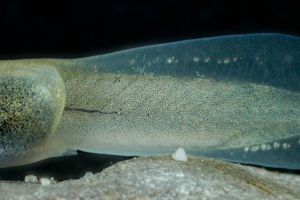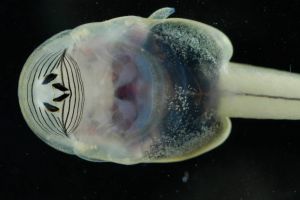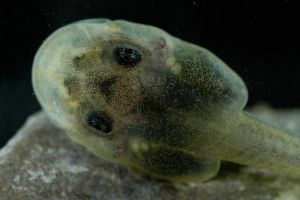
Frogs of Borneo

Frogs of Borneo

Frogs of Borneo

Frogs of Borneo

Frogs of Borneo

Frogs of Borneo

Frogs of Borneo

Frogs of Borneo

Frogs of Borneo

Frogs of Borneo

Frogs of Borneo
amoropalamus
Mountain Torrent Frog
Meristogenys amoropalamus is known from the northern mountains of Borneo at elevations between 1,300 and 2,000 m a.s.l. The type locality is Gunung Tapai Sia, Krayan County, Sarawak, at 1,300 m a.s.l. A confirmed observation extends the range far to the southwest, into central Sarawak. The species can most likely be confused with M. dyscritus. Please read comments on comparison there.
This is a moderately slender frog (females are more heavily built) with a somewhat triangular head and a relatively blunt snout that projects slightly beyond the lower jaw. The eyes are set high, and the canthi (edges between snout and eyes) are sharp and slightly concave. The area between the eye and the nostril (loreal region) is slanted and gently hollowed. Nostrils are positioned on the sides of the snout, just below the canthi, and are noticeably closer to the snout tip than to the eye. The eardrum (tympanum) is distinct, about 80% the size of the eye in males, and smaller in females. Males have paired vocal sacs that form small pouches at the corners of the throat, with openings just inside the corners of the mouth.
The legs are long, and the tibia (shank) is usually more than 0.72 times the snout–vent length. The fingers are slender, with the first and second about the same length. Their tips expand into rounded disks with grooves around the edges. There are no skin fringes or extra tubercles on the hands. In males, a rough nuptial pad covers the top and inside of the first finger from its base to the first joint. The toes have disks similar to those of the fingers. Toe webbing is incomplete, leaving two segments unwebbed on the fourth toe. The inner metatarsal tubercle is oval and shorter than the gap between it and the first joint of the first toe. A small, rounded outer metatarsal tubercle is also present.
Sexual dimorphism is pronounced in this species, as is common in the genus. Females grow to 70–80 mm, while males are substantially smaller (around 40 mm) and less robust. The male’s eardrum is relatively larger (in proportion to the eye) than that of females.
Females are olive green with black spots above. The males we observed were various shades of brown. Some individuals also have black spots along the flanks. The dorsal skin is finely granular with well-developed lateral folds, accentuated by a black line beneath. A short black line goes down behind the eardrum. The throat and chest are whitish with scattered melanophore dots. The lower lip is strongly barred with blackish brown. The belly is whitish, as are the ventral surfaces of the legs, though these are heavily pigmented with melanophores.
The iris is green or greenish-gold in the upper third and dark red in the lower two-thirds, except for the very lowest portion, which is again green.
The tadpole has an enlarged oral disk continuous with a large belly sucker, a feature shared by all species in the genus. In late stage specimens, the lower beak of the mouth appears undivided, but in the early stage individual shown here it is slightly divided. The tail fin has a smooth curvature, and the tail tip is only moderately pointed. Glands are present in both the upper and lower fin and on the body (visible as whitish spots shining through the skin in photographs).
Version tracking
-
14.08.2025
updated






